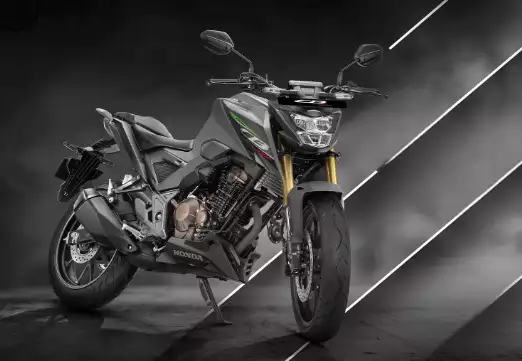 HMSI CB300FNew Delhi:
HMSI CB300FNew Delhi: Honda Motorcycle & Scooter India (HMSI), which recently launched its flex-fuel motorcycle CB300F, says the industry needs government support to drive the demand for these vehicles.
The motorcycle which is compatible with up to E85 fuel (a mixture of 85% ethanol and 15% gasoline) is available for sale at BigWing showrooms. HMSI has initially dispatched 100 units of the model in October.
“It all depends upon how the government takes the initiative in terms of developing the infrastructure, as well as giving tax benefits to the customers,” Yogesh Mathur, Director- Sales & Marketing, HMSI told ETAuto.
“..how the entire infrastructure and distribution network pans out..it also depends upon the availability of the fuel..and price structures for ethanol fuel because it will be very difficult if customers are not able to derive any benefit out of this,” he said.
The launch is part of the government’s Ethanol Blended Petrol (EBP) program to push for a transition to clean energy vehicles. In December 2021, automobile manufacturers were advised to start production of flex-fuel vehicles complying with BS-VI emission norms.
Currently, petrol pumps in the country sell 10% ethanol-blended petrol and all retail fuel outlets are expected to meet the 20% ethanol blended norm by 2025.
Talking about the potential of flex-fuel vehicles for the India market, he said, “We have a surplus in terms of the production of sugarcane. And if this can be utilized in terms of converting that into ethanol, definitely it will help in terms of removing the barrier and the dependency on the forex can also be reduced. Flexibility and scale of business can be enhanced with government support.”
Despite the promising outlook, the flex-fuel market in India faces significant challenges. To offset the higher cost of ownership and drive the adoption of these vehicles, industry body Society of Indian Automobile Manufacturers (SIAM) had earlier requested the government to reduce the GST rate on low-carbon emission technologies, such as flex fuel (like ethanol-blended petrol) and CNG, from the current 28% to 18% in the first stage, and then to 12% once the overall base rate for two-wheelers is brought down to 18%.
Sales Momentum
During the Navratri and Dussehra festivities, HMSI says it has clocked a 24% growth in sales on a year-on-year basis. This is 3X the growth rate of the industry. According to Mathur, the demand is driven by the 125cc segment, both for motorcycles and scooters. “This will be the best-ever festive season for us. We expect a similar momentum during Diwali.”
Scooters currently account for 60% of HMSI sales, with 40% taken up by motorcycles. “By next year, we are looking at increasing our contribution for motorcycles-- 55% share of scooters and 45% motorcycles.”
For the full year, the company expects itself to mark a 20% year-on-year growth. For the overall two wheeler industry, it has estimated a lower double digit growth of 10%-11%. “India's growth story for the two wheeler business remains intact and it will continue to grow. Impact of any new regulations may be expected in the short term, but there are no major challenges in the long term.”
Talking about the narrowing sales gap with Hero MotoCorp, Mathur noted that the Japanese automaker is not looking at become the number one player in terms of volumes. “We want to be number one in terms of products and services that we provide, and not chase the numbers.”
HMSI had earlier confirmed it will enter the EV market with a scooter in 2025. The company will not set up separate dealerships for its EVs and sell via its Red Wing dealerships. “Product and service” are the two key factors to be a successful player in the Indian electric two wheeler market.
BigWing PortfolioHMSI's portfolio in the premium motorcycle retail format BigWing currently accounts for just about 1% of its overall sales.
Mathur says while there are certain customers who directly jump from owning a 100cc bike to choosing a 300cc, this particular segment is not growing at large. “It needs regular freshness in products, and then it drives business for only a certain period of time. So we are understanding this consumer behavior and we have prepared ourselves for the upcoming years accordingly.”
The company plans to bring “many exciting models next year”.
Impact of Regulations
Mathur shared his concern regarding the heightened government regulations on safety, insurance and emissions along with higher road tax that have been leading to a sharp increase in two-wheeler prices, weighing in on sales of these vehicles.
Starting April 2025, the government has mandated the implementation of OBD (Onboard Diagnostics) Stage-IIB norms for the two wheelers. Earlier, the advanced OBD-IIA was made mandatory on all two wheelers sold in India as part of the BS-VI Phase-II emission norms that kicked in from April 1, 2023.
“We are very much worried, because whenever there is a regulation change, it always impacts the demand in the two wheeler industry," he said.
Without sharing the quantum of impact, he said, “Cost will be very high with OBD-IIB. We are negotiating on a daily basis with our suppliers to keep the cost to a minimum."
